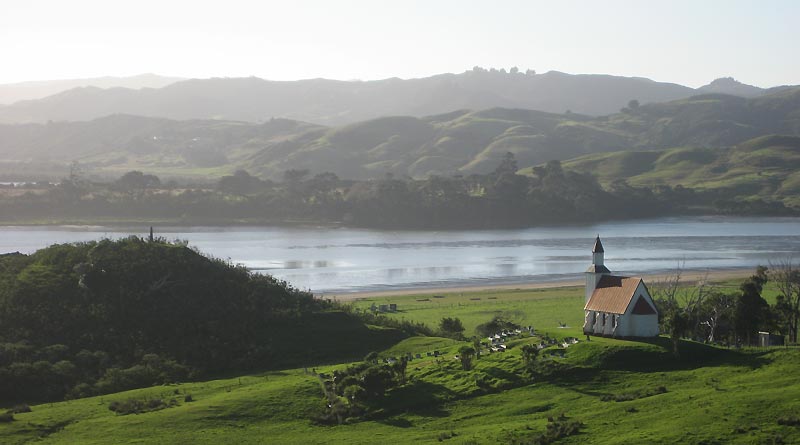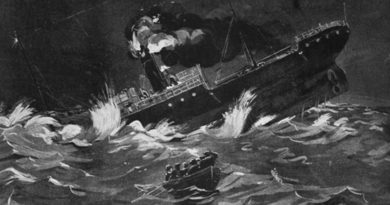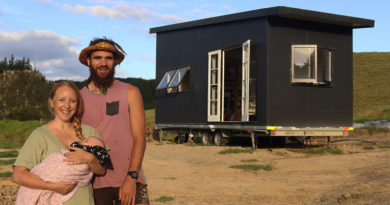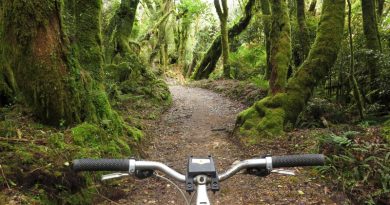Journey to the end of the map
I’ve never been able to resist places at the end of the map. Show me a dead-end road, a peninsula or a cape, and I’ll show you somewhere alluring and mysterious.
At the end of the map even the people are different. They seem more vivid than city folk, bigger in character and less inclined to go with the herd.
It’s no coincidence that New Zealand’s extremities – like Northland and East Cape – are among my favourite places. And I like the dead-end roads within those dead-end places even more.
So it was that I decided, during a holiday in North Hokianga, to follow Pawarenga Road to the very end.
I drove past Runaruna with its bizarre mud volcano, and passed townships marked on my map that translated in reality to single houses. I drove past the spot where the tarseal shrugs and gives up, past mangroves clawing out of the mudflats, past wandering horses and cows chewing their cud in the middle of the road.
Eventually even the gravel ran out and the road melted into the sand of the Whangape Harbour.
At the end of the road the hills of the Warawara Forest retreated and the landscape opened out into pasture, dotted with sprawling houses and abandoned cars.
A broken billboard promised a cold beer at the Golden Stairs Tavern, but I couldn’t see a soul. The only sounds were horses neighing, someone doing donuts on the mudflats, and the wind whipping up dust. I half expected to see a tumbleweed bouncing down the road.
Up a side road and atop a modest hill stood a Catholic church painted red and white, its wooden buttresses imitating the Gothic stonework of faraway Europe.
Inside were rows of dark wooden pews and vivid paintings of Christ’s suffering; clustered outside were well-kept graves decorated with crucifixes, a lizard, even a brass swan. Someone had given ”Mr Bigs” an old cassette player to listen to in his long sleep. Across the road, on the other side of the hill, was another, even more impeccable cemetery where every surname bar one or two was Proctor.
Towards the water a few skeletal trees were bent in half by the wind. A scrubby knoll, carved into terraces and with a prime spot overlooking the Whangape Harbour, could only have been a pa.
An obelisk at the top marked the birthplace of the Te Aupouri people. Surrounded by enemies, they set fire to their pa and fled across the harbour. The ash and thick black smoke covered their escape and stained the water – hence the tribe’s name, which the plaque translated as “Black Smoke”; other sources prefer “Dark Current”.
That afternoon the sky was clear and the harbour was blinding. It was beautiful in a desolate, end-of-the-world kind of way. I felt I was truly at the end of the map.
· · · · ·
When I started work at the Northern Advocate newspaper in 2005 I was looking for an excuse to explore my new home, the Northland region, and turn my newness from a hindrance to an advantage.
Hence a series of travel columns called New to the North, in which I visited and wrote about a new place every fortnight, the more obscure and off-the-beaten-path the better.
In 2008 the series, and specifically this column about an atmospheric little place called Pawarenga in North Hokianga, won a Qantas Media Award (New Zealand’s top print media competition) in the travel column category.





My father was born in pawarenga in 1917…..while at a tangi their..I noticed him walking from marae to the waters edge late in evening. Summer time .the moon reflecting from the motionless water.i asked him if he was OK. He giggled n shook his head mkng a slight noise from his mouth he said son when god made the world he forgot to finish pawarenga….it’s surely is the end of the road …
Thank you John for sharing that lovely story about your father and Pawarenga! Maybe god forgot to finish Pawarenga but he still did a spectacular job creating it. It’s such a magical spot.